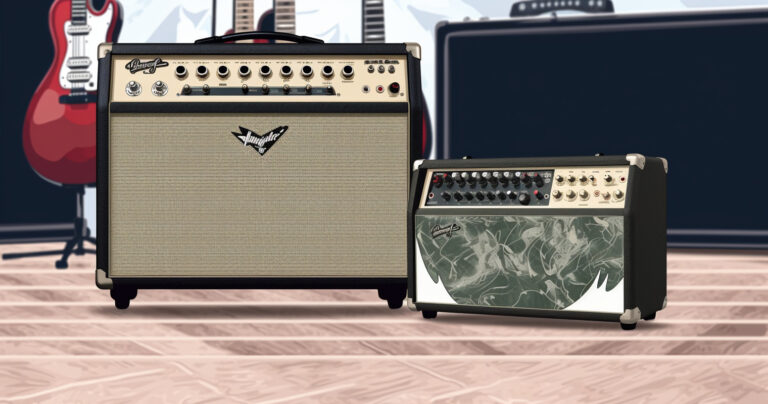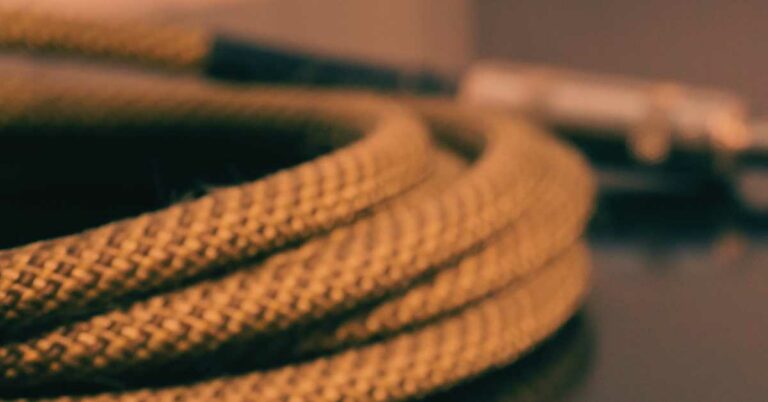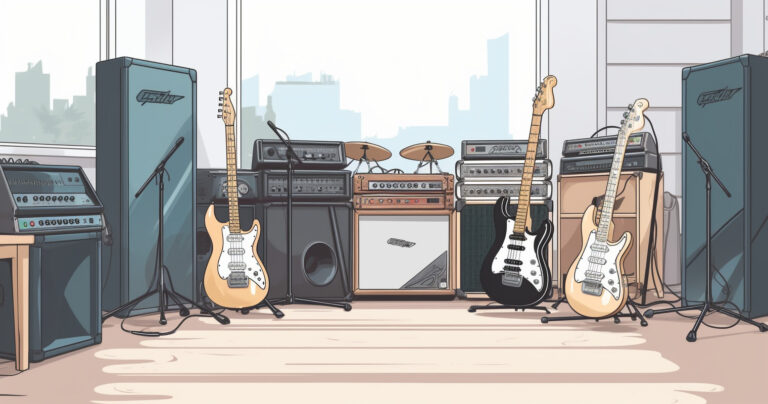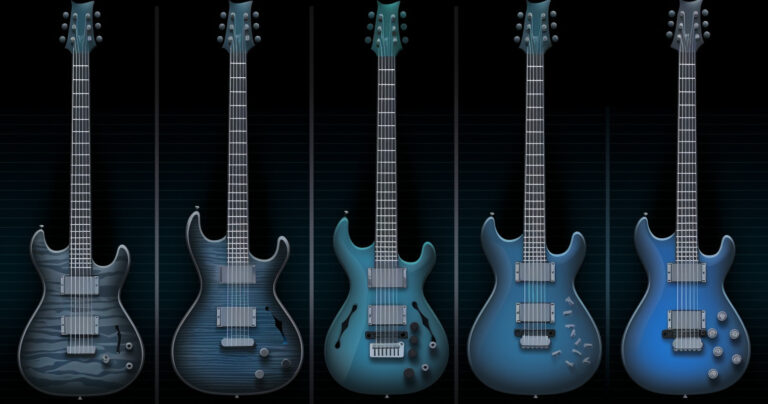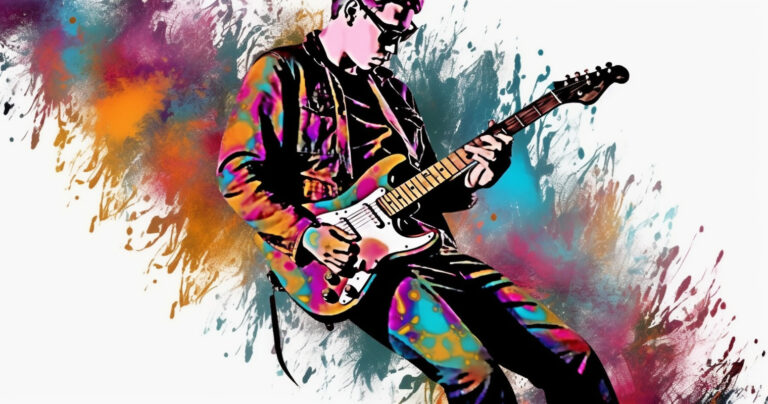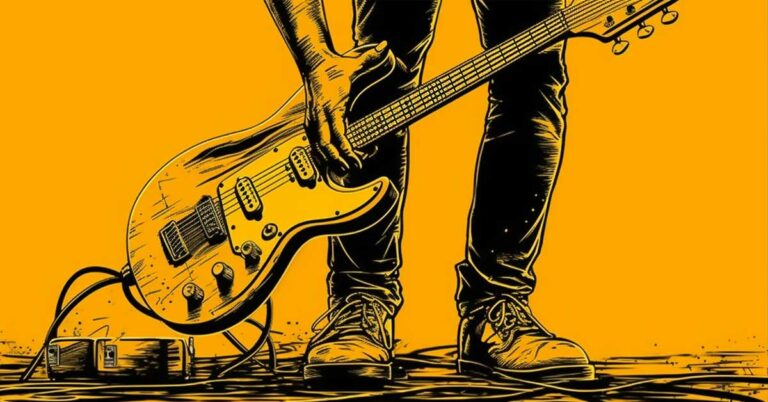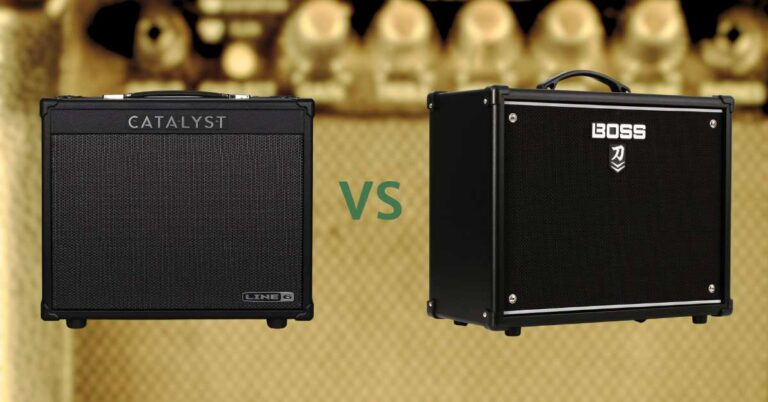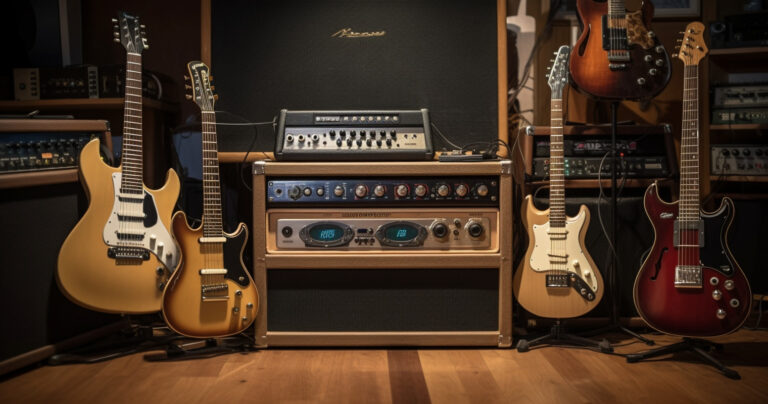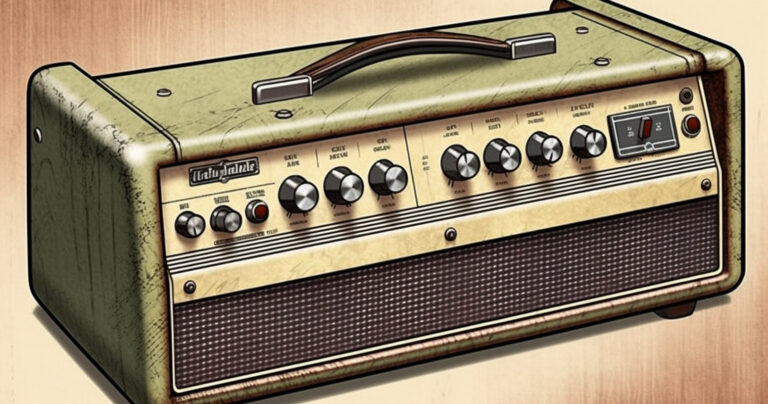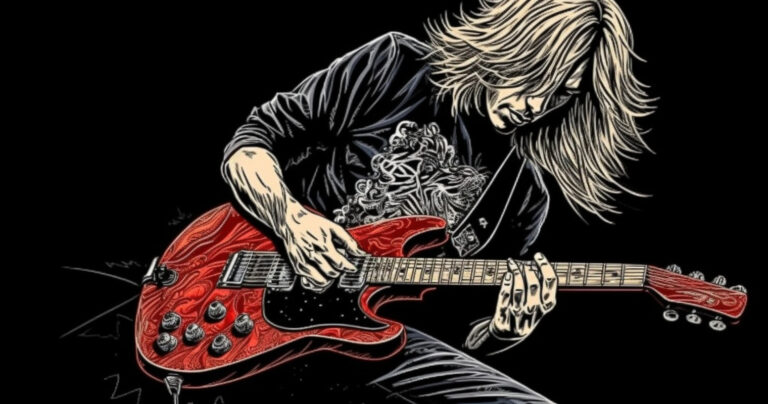Guitar pedals are a great way to add unique sounds to your guitar playing. They can be used to recreate classic guitar sounds from the past, as well as create new and exciting sounds. So lets talk about what you would need to recreate classic guitar sounds from the 1960s to 1990s. (P.S. its hard for me to accept that 1990s is classic rock).
Exploring the Different Types of Guitar Pedals and How to Use Them to Recreate Classic Guitar Sounds
The most common type of guitar pedal is the distortion pedal. Distortion pedals are used to create a distorted sound, which is often associated with classic rock and metal. Distortion pedals can be used to create a variety of sounds, from a light crunch to a heavy, saturated distortion. To recreate classic rock sounds, try using a distortion pedal with a low gain setting and a mid-range frequency boost.
Another popular type of guitar pedal is the overdrive pedal. Overdrive pedals are used to create a smooth, warm sound that is often associated with blues and classic rock. Overdrives are more common to use on a tube amp that already has some built in tube distortion. Again, lower gain settings work best for older classic rock sounds.
Delay pedals are also popular among guitarists. Delay pedals are used to create a repeating echo effect, which can be used to create a variety of sounds. To recreate classic rock sounds, try using a delay pedal with a short delay time and a low feedback setting. Back in the 80s a ton of hard rock used delay pedals.
Reverb pedals are a necessity. I would say you hear reverb in 80-90% of rock songs. It used to create a spacious, ambient sound. To recreate classic rock sounds, try using a reverb pedal with a short decay time and a low mix setting. Lets go into more details about these pedals
Distortion Pedals and Overdrive Pedals
Guitar distortion pedals and overdrive pedals are both popular effects pedals used to achieve a distorted guitar sound. While both pedals are used to create distortion, there are some significant differences between the two.
The big difference is that an Overdrive pedal is pushing the natural distortion of an amp. A distortion pedal is creating its own color of distortion. Often you will see guitarists use an OD pedal on a tube amp that has a good distortion channel. Distortion pedals are often used on amps with a clean sound or clean channel. Overdrive pedals usually add a warm, tube-like character to the guitar sound, while distortion pedals add more sustain, compression, and harmonic content.
One of the primary differences between distortion pedals and overdrive pedals is the amount of gain they produce. Distortion pedals generally produce a higher gain than overdrive pedals, which means they create a more heavily distorted sound. Overdrive pedals, on the other hand, produce a lower gain, which means they create a milder, more natural-sounding distortion.
Another difference between distortion pedals and overdrive pedals is the way they affect the guitar’s tone. Distortion pedals typically compress the guitar’s signal, which can result in a loss of high-frequency content and a more compressed sound. Overdrive pedals, on the other hand, are designed to preserve the guitar’s tone, adding warmth and character without significantly altering the frequency response.
Distortion pedals also tend to have a more “artificial” sound compared to overdrive pedals. This is because they often use diode clipping or other solid-state technologies to create distortion. Overdrive pedals, on the other hand, often use vacuum tubes or analog circuitry to create a more natural, organic distortion sound. Distortion pedals often create a sustain that is longer and more intense, while overdrive pedals usually provide a more natural-sounding sustain that is less “saturated.”
Distortion Pedals and the Classic Guitar
There is no single distortion pedal that replicates classic sounds. They can all give you some level of distortion and crunch. The pedal you use depends on which type of sound you are looking for or which song you want to play. Here is a quick list of some of the popular guitarists and pedals they used. Please keep in mind most guitarists used a dozens if not hundreds of pedals and they are often different on every album.
- Electro-Harmonix Big Muff – Pink Floyd
- Tone Bender Fuzz – Led Zeppelin
- MXR Distortion Plus – Randy Rhoads
- Boss DS-1 – Joe Satriani, Kurt Cobain
- Boss SD-1 – Steve Vai
- Boss Blues Driver BD-2 – Billy Joe Armstrong
This list would be endless if I wanted to hit every iconic guitarist, but this is a good example of the basics of classic distortion pedals. No matter what style of music you play, distortion pedals can help you create classic guitar sounds With a little experimentation, you can find the perfect pedal for your style.
The Difference in Overdrive Pedals
Overdrive pedals like the Ibanez Tubescreamer are incredibly versatile tools that can be used to create a wide variety of classic guitar sounds. Whether you’re looking to recreate the raw, gritty tones of early blues and rock ‘n’ roll, or the smooth, creamy distortion of classic hard rock and metal, an overdrive pedal can help you achieve the perfect sound.
One of the key benefits of using an overdrive pedal is that it allows you to add a layer of distortion to your guitar signal without completely altering your tone. This can be particularly useful if you’re looking to create a classic sound that still retains the character and personality of your guitar and amplifier.
Overdrive pedals use a combination of diodes and transistors to clip the signal from your guitar, producing a distorted sound. The amount of distortion can be adjusted by tweaking the pedal’s settings, which typically include controls for gain, tone, and level.
A common way to use an Overdrive pedal is called boosting. This is where you take the gain down to zero or really low then crank up the level. This often has an effect of adding saturation to tube amp distortion. I own a Marshal DSL 20C and the distortion channel has super high gain. So I put a tubescreamer in front of it with no gain and cranked level and it sounds so much better. Actually, there are also boost pedals that were created and designed to do the same thing but they are made to make sure you don’t add any color to the tone. Tub screamers still have some effect on tone. I eventually added a TC Spark which is a great low cost boost pedal with tons of options to enhance the distortion without dramatically changing the nature of the amp distortion.
Using Overdrive Pedals to Create Classic Guitar Sounds
If you’re looking to recreate the gritty, bluesy tones of early rock ‘n’ roll, you might want to keep the gain low and the tone control relatively high. On the other hand, if you’re going for a more modern, high-gain sound, you might want to crank up the gain and adjust the tone to add more bite and aggression.
How much low, mids and high you use often depends on the speaker cab or amplifier. In the 1980s for hard rock and metal, you will notice most of the setting will have lows in the 5-8 range, mids 2-5 and then high in the 7-10 range. This is commonly known as “scooped mids.” Bands like Motley Crue used really high treble though their sound can be difficult to achieve as Mick Mars used a complex mix of amps.
Of course, this is just a basic idea of where to start because the amp, guitar and entire chain will
Ultimately, the key to using overdrive pedals to create classic guitar sounds is to experiment and find the settings that work best for your style and sound. With a little bit of practice and some careful tweaking, you can achieve a wide range of classic tones that will help you stand out from the crowd and make your music truly unique.
The use of overdrive pedals to create classic guitar sounds is a popular technique among guitarists. Overdrive pedals are used to create a distorted sound, which can be used to create a variety of classic guitar sounds. By manipulating the gain and tone controls on the pedal, guitarists can create a wide range of sounds, from vintage blues to modern metal. The most popular OD pedal is an Ibanez Tubescreamer. The earliest version was called the TS9 and a few years later a different but similar model was created called the TS808.
Modulation / Chorus Pedals
Modulation pedals really change the sound of a guitar. The most popular modulation sounds are the Chorus, Wah, Phaser, Tremolo, Flanger, Fuzz, Octave. These pedals have the most impact on shaping the sound.
Chorus is probably the most popular modulations but need to be in a class by themselves. Chorus pedals are used to create a shimmering, layered sound. To recreate classic rock sounds, try using a chorus pedal with a low rate setting and a low depth setting.
Jimi Hendix made the Wah Pedal famous. He also used a physically rotating speaker called a Leslie. The Univibe or vibe pedal was created to mimic that effect. It actually didn’t do a good job but it had its own cool sound that stuck. Rotary pedals were created to nail that sound.
Eddie Van Halen popularized the Phaser sound in Van Halen I. He used an MXR Phase 90. But there are endless modulation sounds. They can make really strange sounds with endless possibilities.
Here is a list of famous songs that used modulation pedals and which types of pedals they used
- “Purple Haze” by Jimi Hendrix – Fuzz Face pedal
- “Money” by Pink Floyd – Uni-Vibe pedal
- “Sweet Child O’ Mine” by Guns N’ Roses – Wah pedal (Solo)
- “Voodoo Child (Slight Return)” by Jimi Hendrix – Wah & Octavia pedal
- “Black Sabbath” by Black Sabbath – Fuzz pedal
- “Are You Gonna Go My Way” by Lenny Kravitz – Wah pedal
- “Little Wing” by Jimi Hendrix – Rotary or Univibe (Uses Leslie Speaker)
- “Come As You Are” by Nirvana – Chorus
- “The Trooper” by Iron Maiden – Wah
- “Tears in Heaven” by Eric Clapton – Chorus
- “The Chain” by Fleetwood Mac – Fuzz
- “Message in a Bottle” by The Police – Chorus & Flanger
- “Sultans of Swing” by Dire Straits – Wah pedal
- “Comfortably Numb” by Pink Floyd – Uni-Vibe pedal
- “Eruption” by Van Halen – Phaser pedal
Thanks to all these musicians that made these funky sounds, us guitarist decide we want to play the song so we go out and buy these pedals. I own an Flanger, Phaser, Rotary pedals almost entirely because of Van Halen and Hendrix.
How to Use Delay Pedals to Recreate Classic Guitar Sounds
There are several types of delay pedals available, including analog, digital, and tape-based. Each type of delay pedal has its own unique sound, so it’s important to choose the one that best suits your needs. A lot of times, it will depend on the exact song you want to create.
I find myself using digital delay a lot, but I owned a Boss DD3 for a long time so maybe I just got used to it. I switched to a NUX Atlantic, which is an inexpensive pedal that has both delay and reverb on it as it saves some room on my pedal board. Most delay pedals have several parameters that can be adjusted, including delay time, feedback, level and mix. Experiment with these settings to find the sound you’re looking for.
Using Reverb Pedals to Create Classic Guitar Sounds
The most common type of reverb is hall or room reverb, which simulates the sound of a big room or concert hall. This type of reverb is great for creating a warm, vintage tone. Other types of reverb include ‘plate’ reverb, which simulates the sound of a metal plate, and ‘spring’ reverb, which simulates the sound of a spring.
Spring reverb works by using a transducer to send an audio signal through a metal spring. The spring vibrates in response to the signal and creates a series of reflections that bounce back and forth along the length of the spring, much like sound waves in a room. These reflections are picked up by a second transducer and added back into the original signal, creating a sense of space and natural reverb. You commonly find spring reverb in vintage Fender amps.
Even though we can use pedals to create these reverb sounds, their names are are based on the way old vintage amps created reverb. Plate reverb is a type of artificial reverb that is created by using a large metal plate. The plate is suspended within a frame and is equipped with a transducer at one end and a pickup at the other. The transducer sends an electrical signal to the plate, which causes it to vibrate, creating sound waves. Plate reverbs were created using long plates so they were never put in amps as far as I know.
Most reverb pedals have three main controls: level, decay, and mix. The level control adjusts the overall volume of the reverb, while the decay control adjusts how long the reverb lasts. The mix control adjusts the balance between the dry signal and the reverb signal. By adjusting these controls, you can create a range of classic guitar sounds, from subtle ambience to full-on reverberation.
Combining Different Pedals to Create Unique Classic Guitar Sounds
The classic guitar sound is one of the most sought-after tones in the music industry. It is a sound that has been used in countless recordings and performances over the years, and it is a sound that many guitarists strive to achieve. While there are many ways to achieve this classic sound, one of the most effective methods is to combine different pedals to create unique and interesting tones.
Start by setting each pedal to its lowest setting and then gradually increase the settings until you find the sound you are looking for. You may find that some combinations work better than others, so it is important to experiment and find the combination that works best for you.
Once you have found the combination of pedals that works best for you, the next step is to experiment with different settings. Try different levels of gain, different levels of distortion, and different levels of delay and reverb. This will allow you to create a unique sound that is tailored to your own playing style.
Finally, it is important to remember that the classic guitar sound is not something that can be achieved overnight. It takes time and practice to perfect the sound, and it is important to experiment and find the combination of pedals that works best for you. With patience and dedication, you can create a unique and classic guitar sound that will be sure to impress your audience.
Using Pedals to Create Sounds
Guitar pedals are a great way to recreate classic guitar sounds. With the right combination of pedals, you can create a wide range of sounds from vintage to modern. But let me warn you, that you are likely to go down the rabbit hole of “tone chasing.” This is when a guitarist is constantly trying and buying gear to sound like Zeppelin, EVH, Randy Rhoads, etc. Its hard to nail their sound. The next thing you know you have $5000 worth of guitar pedals laying on the floor.

